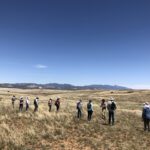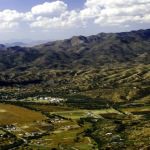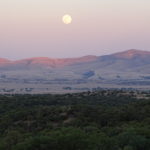
Apr 13, 2015 | Blog
FOR IMMEDIATE RELEASE
Kevin Pakulis Band to play benefit concert for Friends of the Mountain Empire, with special guest appearance from Congressman Raúl Grijalva
TUCSON, ARIZ. — The Kevin Pakulis Band will play a benefit concert to raise funds and awareness for the Friends of the Mountain Empire on Saturday, May 9th at the Hotel Congress in Tucson. Tickets for the magical evening of music can be purchased now to support the organizations – Patagonia Area Resource Alliance, Sky Island Alliance, Defenders of Wildlife, Tucson Audubon Society, Center for Biological Diversity and Save the Scenic Santa Ritas – that are working to protect and preserve the habitat, water, and wildlife of the Mountain Empire from new mining in the Patagonia Mountains, Santa Rita Mountains, Canelo Hills, and the San Rafael Valley of southern Arizona.

The event will provide a unique and exciting opportunity to hear the soulful music of Tucson-based, award-winning Americana singer-songwriter Kevin Pakulis, while supporting the incredible ecological and cultural biodiversity of the region.
“Our goal is to draw attention to the local organizations that play a vital role in protecting and restoring wild places in southern Arizona. More specifically, to draw attention to the message they bring – a message that deserves careful consideration, if not enthusiastic action,” said Pakulis.

Ocelot, photo US FWS
Arizona’s southwestern Mountain Empire is a hidden gem of the country, recognized for its beauty, uniqueness and ecological importance. The region is rich in wildlife and plant diversity and supports some of the world’s most imperiled wildlife including the jaguar, ocelot, lesser long-nosed bat, Mexican spotted owl and yellow-billed cuckoo. Sadly, destructive mining projects that continue to be proposed and approved threaten not only endangered wildlife, but the water, health and safety of local communities.
The benefit will include a special guest appearance from Congressman Raúl Grijalva, who will speak to the importance of conserving the natural and local communities of the Mountain Empire in the face of such threats.
About the Event
When: Saturday, May 9th, 7:00pm – 11:00pm
Where: Copper Hall in Hotel Congress, 311 E Congress St, Tucson, AZ 85701
Who: Kevin Pakulis Band, Friends of the Mountain Empire, Congressman Raúl Grijalva
Tickets: $20 Advance/$25 At the door
For more information and to purchase advance tickets, please visit: http://www.patagoniaalliance.org/friends-of-the-mountain-empire-benefit-concert-with-kevin-pakulis/

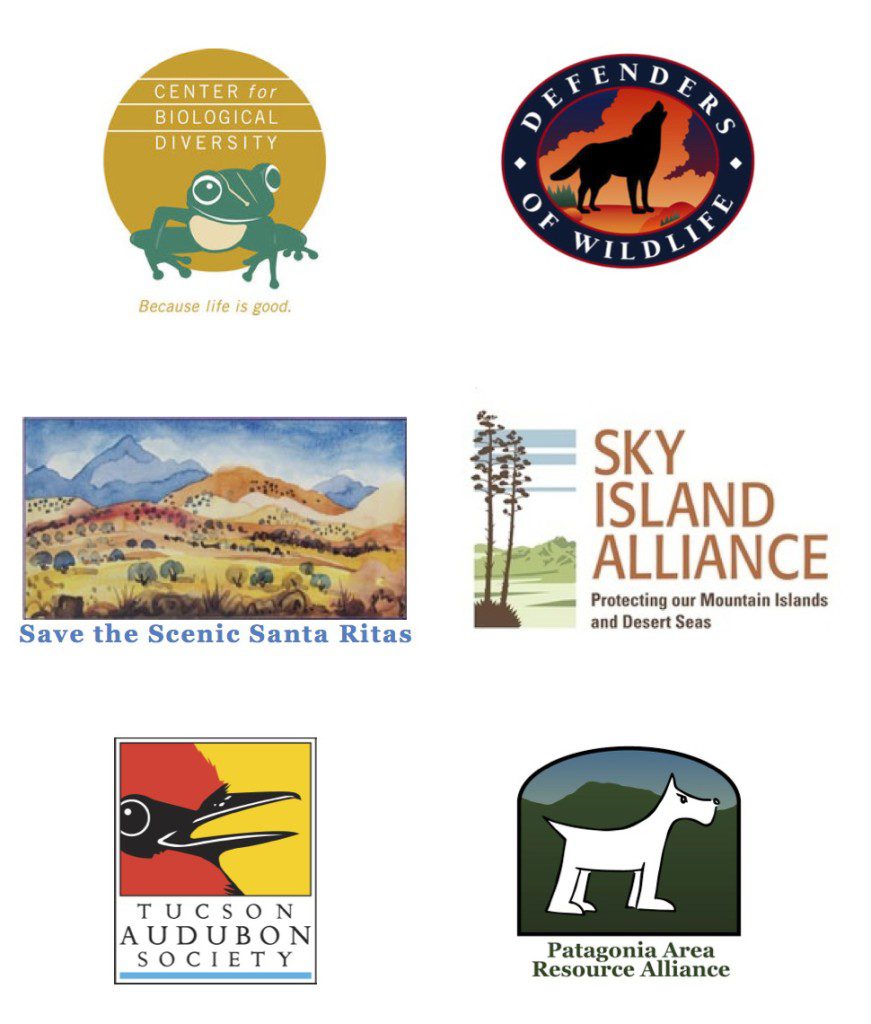

Apr 10, 2015 | Blog
|
|
|
Patagonia EARTHfest Event:
Trails Day • Earth Day • Arbor Day
A celebration of our biological diversity, cultural heritage, and local resiliency in Patagonia, Arizona.
The 6th Annual Patagonia EARTHfest is being held  on Saturday, April 18 in Patagonia, Arizona. Two additional feature presentations on Thursday, April 16 and Friday, April 17. on Saturday, April 18 in Patagonia, Arizona. Two additional feature presentations on Thursday, April 16 and Friday, April 17.
This year’s event theme is TREES.
The Patagonia Area Resource Alliance will be hosting a booth at Cady Hall for all the latest information on area mining (in)activity.
Follow link for full schedule of EARTHfest Guided Walks • Workshops • Youth Activities • Family Fun
Or follow the EARTHfest Facebook Page: facebook.com/EarthFestPatagoniaAZ |
|
|
Save the Date: Saturday, May 9, 2015
|

|
|
Kevin Pakulis Benefit Concert for Friends of the Mountain Empire
Join us for a very special evening of music with the Kevin Pakulis Band on Saturday, May 9 at 7pm in Copper Hall at Hotel Congress, Tucson.
Special guest appearance by Congressman Raúl Grijalva.
Support the organizations working to protect and preserve the habitat, water, and wildlife of the Mountain Empire from new mining in the Patagonia Mountains, Santa Rita Mountains, Canelo Hills and the San Rafael Valley of southern Arizona.
Center for Biological Diversity | Defenders of Wildlife | Save the Scenic Santa Ritas | Sky Island Alliance | Tucson Audubon Society | Patagonia Area Resource Alliance.
Additional thanks to Hotel Congress for helping us host an evening of information, inspiration, and MUSIC in their beautiful Copper Hall. |
|
|
|
|
|
|
|
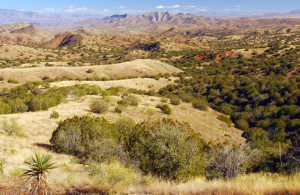
Mar 6, 2015 | Blog
ADEQ decision ruled “not supported by evidence” and “an abuse of discretion”
Save the Scenic Santa Ritas Media Release
(Phoenix, Ariz.) A Maricopa County (AZ) Superior Court today overturned a key air pollution permit for Toronto-based Hudbay Minerals’ proposed Rosemont copper mine. Judge Crane McClennen ruled the Arizona Department of Environmental Quality (ADEQ) acted “contrary to law” in its January 2013 decision to issue Rosemont the permit.
In completely adopting the evidence and arguments presented by SSSR, the court found the state relied on flawed data provided by Rosemont that was designed to understate the air pollution impact of the proposed $1.5 billion open pit copper mine.
McClennen stated in his ruling that ADEQ’s decision to issue the permit “was arbitrary and capricious,” an “abuse of discretion,” and “not supported by substantial evidence.”
The ruling came in response to a lawsuit filed by Save the Scenic Santa Ritas (SSSR), a southern Arizona coalition opposing the mine. SSSR provided evidence that Rosemont had manipulated its data in an attempt to convince ADEQ that pollution from the mine would not violate applicable air quality and health standards. SSSR showed if appropriate modeling were used, Rosemont’s operations wouldindeed violate these standards.
“Rosemont has a long history of playing fast and loose with the facts,” said Gayle Hartmann, SSSR’s President. “They expect ADEQ and other regulatory agencies to just rubber stamp their projects, but this time they both got caught. The court agreed with us that ADEQ did not do an adequate and proper job of evaluating Rosemont’s application.

Proposed Rosemont Copper Mine Site. Photo courtesy Arizona Mining Reform Coalition.
Rosemont is seeking state and federal permits to blast a massive open pit copper mine in the Santa Rita Mountains on the Coronado National Forest near Tucson. The air pollution permit is one of the several permits that Hudbay needs, but still doesn’t have, before it can begin operations at the mine site.
Today’s ruling means ADEQ will have to re-evaluate the air permit in light of additional data and analysis presented by SSSR showing the mine would violate state air quality and health standards.
At a hearing before an Administrative Law Judge last year, air quality experts working with SSSR provided evidence revealing that Rosemont selected an extremely low data measurement threshold for its ADEQ permit application in a manipulative attempt to show that mine operations would not exceed air quality standards.
Rosemont also did not tell ADEQ that it had provided data to the U.S. Forest Service, at that agency’s request, showing that using even a slightly higher measurement threshold would cause the mine to violate air quality standards. SSSR emphasized the significance of the report to the Forest Service proving that violations would occur.
Attorneys for Rosemont acknowledged to Judge McClennen in January that the company provided ADEQ with air pollution data that was substantially different than what the company gave to the U.S. Forest Service.
In particular, Rosemont chose to use a 5% ratio of nitrogen dioxide to nitrogen oxide pollution in its air pollution model, even though it had no hard data proving that 5% was the appropriate ratio to use. In fact, Rosemont had looked at how much pollution would be emitted using ratios of 5%, 10%, and 30%, but decided to give ADEQ only the 5% data results – the only level not showing a violation of air quality and public health standards.
By comparison, the Environmental Protection Agency, which oversees the Clean Air Act, recommends a default ratio of 50% when, as here, there is no hard data supporting a lower ratio.
“Rosemont can’t have it both ways,” said local physician Dr. Tom Purdon who also sits on the SSSR Board of Directors. “They tell the Forest Service one thing and then tell ADEQ something very different. What that tells southern Arizonans is that Rosemont still can’t be trusted. And it’s our health that would be jeopardized if the mine violates air quality standards.”
The Court ruling can be downloaded here.
Save the Scenic Santa Ritas is a non-profit organization working to protect the Santa Rita and Patagonia Mountains from environmental degradation caused by mining and mineral exploration.

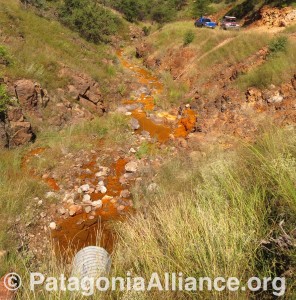
Sep 26, 2014 | Blog
FOR IMMEDIATE RELEASE
Contact: Courtney Sexton, 202.772.0253, csexton@defenders.org
Wendy Russell, 520.477.2308, Wendy@PatagoniaAlliance.org
Toxic Mining Contaminants Threaten People and Wildlife in Arizona

Bright orange water overflowing from the historic Trench mine, twice reclaimed by Asarco and now owned by the State of Arizona.
TUCSON, ARIZ. – Contaminants from a mine spill in Cananea, Sonora earlier this summer have likely reached the San Pedro River flowing into Arizona. And with recent storms, old copper and silver mine sites near Patagonia are leaking bright red contaminants into local streams. These toxic reminders of our mining history have the potential to wreak havoc on local water supplies and wildlife in the Coronado National Forest, one of the most biologically diverse areas in the world.
“The Coronado National Forest, the “Sacred” Santa Ritas, the San Pedro River Valley, the Patagonias and all of the Sky Islands nourish some of the most incredible and endangered biodiversity in the world, including jaguars, ocelots, yellow-billed cuckoos and Gila topminnows,” said Eva Sargent, director of Southwest Programs for Defenders of Wildlife. “This is a place that must be conserved, not a place for the destructive practice of mining and its toxic byproducts that ruin our public landscapes and pollute our waters.”
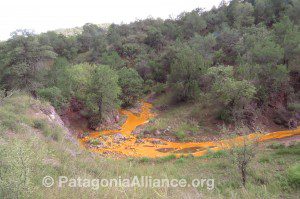
Toxic overflow from the historic Lead Queen mine in the Patagonia Mountains drains towards Harshaw Creek.
“All this toxic runoff is a prime example of why new mines should not be approved in the mountains of southern Arizona,” added Wendy Russell of the Patagonia Area Resource Alliance. “There are already approximately 130 abandoned mines in the Patagonia Mountains, many with eroding tailings and leaking tunnels discharging toxins. With heavy rainfall, that toxic discharge overflows into water systems like Harshaw Creek and Alum Gulch in the Santa Cruz watershed and threatens both local communities’ drinking water and already endangered fish and wildlife. With the state and federal governments seemingly incapable of cleaning up old polluting mines in the Patagonia Mountains, we have no confidence in their abilities to regulate new mining activity to protect our community’s drinking water, health and safety.”
Interviews with local experts regarding abandoned mine overflows in the Patagonia Mountains of southern Arizona in September, 2014.
###
Defenders of Wildlife is dedicated to the protection of all native animals and plants in their natural communities. With more than 1.1 million members and activists, Defenders of Wildlife is a leading advocate for innovative solutions to safeguard our wildlife heritage for generations to come. For more information, visit www.defenders.org<http://www.defenders.org/> and follow us on Twitter @DefendersNews<http://twitter.com/DefendersNews>.
The Patagonia Area Resource Alliance is a citizen watchdog organization that monitors the activities of mining companies, as well as ensures government agencies’ due diligence, to make sure their actions have long-term, sustainable benefits to our public lands, our water, and the town of Patagonia. For more information visit www.patagoniaalliance.org<http://www.patagoniaalliance.org>

Aug 8, 2014 | Blog

Save the Scenic Santa Ritas Media Release
August 8, 2014
Environmental Catastrophe in Canada Underscores Rosemont Threats
(TUCSON, Ariz.) The international engineering firm that designed a Canadian mine tailings dam that collapsed earlier this week is also playing a key role in the development of the proposed Rosemont Copper Mine’s tailings dump.
Monday’s catastrophic failure of Imperial Metal’s Mount Polley tailings dam sent millions of gallons of toxic slurry laden with heavy metals and other pollutants gushing into waterways approximately 370 miles northeast of Vancouver, BC. 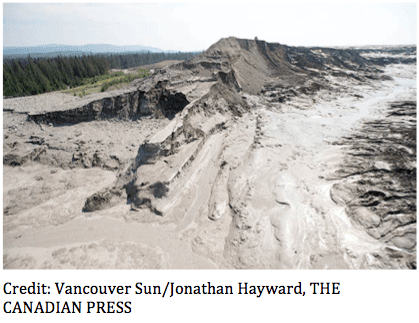
The Mount Polley environmental catastrophe has resulted in an emergency ban on drinking water, devastation of important salmon habitat and damage to the region’s tourism and outdoor economy. The costs of cleaning up the environmental damage are unknown, but the stock market apparently believes it will be significant, as Imperial Metals share price has dropped by over 40% since the incident occurred on Monday.
Knight Piésold Ltd. had provided Imperial Metals with design, construction supervision, quality control, and annual inspections of the failed Mount Polley tailings facility, according to Canadian regulatory filings.
In Arizona, Knight Piésold conducted laboratory testing on materials that would be used in Rosemont’s proposed tailings facility as a subcontractor for AMEC Earth & Environmental, Inc., which prepared the final design report for Rosemont’s dry stack tailings storage facility in April 2009.
AMEC also relied on Knight Piésold in 2010 to conduct analysis of soil materials in response to questions from the Arizona Department of Environmental Quality after it determined that the previous “assessment of physical and engineering properties of the dry stack tailings…is inadequate.”
“What happened in Canada this week is a reminder that, notwithstanding the PR spin from mining companies, the worst case scenario can and does happen,” said Gayle Hartmann, President of the Save the Scenic Santa Ritas. “While there may be some differences in the design, if even a fraction of the devastation that occurred in Canada were to take place at the proposed Rosemont mine, the drinking water supplies of a metropolitan area of 1 million people would be impacted not to mention the destruction of important desert riparian habitat.”
Potential incidents such as what occurred at the Mount Polley mine are the basis for SSSR’s repeated calls for the relevant regulatory agencies to do their job and reject the proposed Rosemont Mine because the risks to southern Arizona’s water supplies and economy are just too great. Earlier this year, a diverse group of organizations and individuals, including Save the Scenic Santa Ritas, Pima County, the Tohono O’odham Nation and Pascua Yaqui Tribe, and the Arizona Game and Fish Department, filed comprehensive written objections with the Forest Service on its final environmental analysis for the proposed mine.
Their objections raised a number of critical issues that, in light of the disaster in Canada, are even more relevant and significant today. These objections respond to the failure of the Forest Service to address the unmitigated toxic pit lake that will be created, accepting Rosemont’s and its engineers unproven assurances about the technical feasibility of its dry stack tailings which have never been used on a mine the size of Rosemont, allowing potential violations of the Clean Water and Clean Air acts and failing to set a specific amount for a reclamation bond that would clean up environmental disasters such as what occurred at Mount Polley.
“Given the revelation that the engineering firm that was involved in designing the failed tailings facility in Canada was also involved in the design of the Rosemont facility, the Forest Service must reverse its rubber stamp approval of the mine and along with the other regulatory agencies, reject the Rosemont mine to ensure that what happened in Canada will not happen here,” Hartmann said. “There are some places that should not be mined and the Santa Rita Mountains are just such a place. ”
Save the Scenic Santa Ritas is a non-profit, community organization working to protect the Santa Rita and Patagonia Mountains from environmental degradation caused by mining and mineral exploration activities. For more information, go
to ScenicSantaRitas.org or RosemontMineTruth.com.
For media coverage of the Mount Polley Mine:
Vancouver Sun
CBC News
CTV News

Jun 27, 2014 | Blog
Save the Scenic Santa Ritas PRESS RELEASE
June 23, 2014

HudBay’s acquisition changes nothing – Rosemont is still a bad project
(TUCSON, Ariz.) Today’s announcement that Augusta Resource Corporation has accepted Toronto-based Hudbay Minerals’ hostile takeover bid does nothing to change the simple facts that the proposed massive Rosemont open pit copper mine in the Santa Rita Mountains south of Tucson would inflict devastating impacts on southern Arizona’s environment and economy and still faces daunting regulatory challenges.
“The proposed Rosemont Mine will always be a bad project no matter who owns it,” said SSSR president Gayle Hartmann. “The massive open pit mine threatens southern Arizona’s drinking water, air quality, wildlife and mountains. We will continue to oppose this terrible proposal until it is defeated.”
The U.S. Environmental Protection Agency has stated that the massive open-pit mine that would destroy more than 3,000 acres of Coronado National Forest would result in ‘substantial and unacceptable impact’ to water supplies of ‘national importance’ and that proposed mitigation measures are ‘scientifically flawed’ and ‘grossly inadequate.’
Today’s news that Augusta accepted the bid also exposes the company’s repeated promises that it was “committed” to the region as nothing more than a deceptive public relations campaign trying to convince southern Arizonans that the Rosemont Mine was somehow essential to the future of southern Arizona’s economy.
“
Nothing could be further from the truth,” said Dr. Tom Purdon, a Green Valley physician and SSSR board member. “And the truth is something both Augusta and its Rosemont Copper subsidiary have been playing fast and loose with since Day One. There are some places that mines don’t belong because the harm that would be caused outweighs any potential benefits, and the Santa Rita Mountains are one of those places. The proposed Rosemont Mine will inflict irreparable damage that will destroy one of the most important watersheds in Arizona and threaten the health of area residents until long after the mine is closed.
HudBay now assumes the regulatory burden of getting the project approved which, given recent developments, is far from certain. Major regulatory hurdles remain, including:
The Final Environmental Impact Statement (FEIS) is inadequate and may have to be revised or supplemented. Not only does the FEIS for the proposed mine present significant new information that must be put out for another round of public comment but it is missing information on impacts of the mine to private well owners, impacts of displaced recreation, invasive species, impacts to migratory birds from the toxic pit lake, revegetation, and many more potential economic and environmental effects. In addition, its identification and analysis of the effectiveness of proposed mitigation measures is seriously flawed. While the Forest Service has rejected a number of specific objections filed by Arizona citizens and local governments, earlier this month the Regional Forester directed the Coronado National Forest Supervisor to consider either revising or supplementing the FEIS in light of new information and following the completion of a new round of consultation under the Endangered Species Act.
Rosemont air pollution permit challenged in court. A lawsuit has been filed in Maricopa County (AZ) Superior Court seeking to overturn the state’s illegal decision to issue an air pollution permit for the Rosemont mine. The suit alleges that the modeling information Rosemont provided the state was based on data that was manipulated in a misleading attempt to show that the mine operations would comply with air quality standards.
The Fish and Wildlife Service and Forest Service reinitiate Endangered Species Act consultations. The recent photograph of an ocelot near the proposed Rosemont copper mine site, combined with new information on the impacts to water supplies on which other endangered species depend, has triggered a new round of formal Endangered Species Act consultations between the two federal agencies. New information about the proposed mine’s potential depletion of water resources on the federally-owned Las Cienegas National Conservation Area located in the valley immediately east of the Santa Rita Mountains indicate that the project impacts on water-based endangered species is much more serious than previously anticipated.
The US Army Corps of Engineers deems the plan to mitigate the Rosemont Mine’s damage to vital watershed inadequate, thus jeopardizing the essential Sec. 404 permit. The Army Corps notified Rosemont last month that its most recent mitigation plan in its application for a Clean Water Act permit fails to fully compensate for damage the proposed mine would cause to springs, washes and wetlands. The mine cannot be built without the 404 permit.
The U.S. Environmental Protection Agency (EPA) recommended denial of the Rosemont Sec. 404 Clean Water Act permit. In a November letter sent to the Army Corps, the EPA states that the proposed wetlands mitigation plan to compensate for the loss of jurisdictional waters of the United States is “insufficient to avoid ‘significant degradation’ of the aquatic ecosystem.” The EPA stated “the proposed mitigation is grossly inadequate to compensate for the mine’s impact.”
It is important to note that ultimately EPA has veto authority over this permit.
Federal, State, and County jurisdictions object to water quality certification for the Rosemont project. Pima County, the EPA, the Army Corps and the Arizona Department of Game and Fish have all raised serious concerns regarding a critical state water quality protection certification that is needed before construction can begin. The state certification must be issued before the Army Corps can approve the 404 permit and construction can begin on the mine.
The proposed Rosemont Mine will significantly impact the water resources of a congressionally-established National Conservation Area. The BLM-managed Las Cienegas National Conservation Area lies in the valley directly east of Rosemont’s proposed mile-wide, half-mile deep open-pit copper mine. The 45,000-acre conservation area was protected by Congress in part to protect the northerly-flowing Cienega Creek that bisects the site. The Final Environmental Impact Statement states the mine is likely to have negative impacts on Cienega Creek by lowering the groundwater table and reducing the surface flows on important tributaries, including Empire Gulch and Davidson Canyon. Two streams flowing from the Santa Rita Mountains into the conservation area are listed as Outstanding Arizona Waters and are legally protected from any degradation.
Key state groundwater pollution permit taken to court. SSSR filed a lawsuit challenging the issuance of the Aquifer Protection Permit (APP), a key state water permit needed to begin construction of the mine. The project would be constructed in a watershed that provides recharge to a primary drinking water aquifer for a community of almost 1 million. The suit alleges, among other things, that the state illegally issued the permit without taking into account the mine’s impact on surface waters. A decision is expected later this summer.
The proposed mine’s devastating impacts to the land and water has generated widespread and determined opposition to the project. Opponents include:
Native American Communities — The Tohono O’odham Nation and Pascua Yaqui Tribe, the tribal governments in the vicinity of the proposed mine, stated in a jointly authored column published in the local paper, that “this mine will destroy our sacred lands known as Ce:wi Duag by the Tohono O’odham and Heweli Sewa Kawi by the Pascua Yaqui that link our ancestors to our future generations.”
Local governments — The City of Tucson, Pima County, Santa Cruz County, Town of Patagonia, and Green Valley Community Coordinating Council have all passed resolutions against the project. Opposition remains steadfast in spite of Rosemont’s failed attempts to influence local elections by backing candidates seeking to defeat elected officials and candidates that oppose the mine.
National and Arizona conservation organizations — In January, a dozen Arizona and national environmental groups sent a joint letter to elected officials requesting that they oppose the construction of the proposed mine. The “short-sighted mining proposal, [is] a project that would primarily enrich a handful of foreign investors at the expense of those of us whose lives and livelihoods would be jeopardized by the mine’s depletion of precious groundwater supplies and its pervasive round-the-clock water, air, noise, and light pollution,” the letter stated.
Save the Scenic Santa Ritas is a non-profit, community organization working to protect the Santa Rita and Patagonia Mountains from environmental degradation caused by mining and mineral exploration activities. For more information, go to ScenicSantaRitas.org or RosemontMineTruth.com.
















